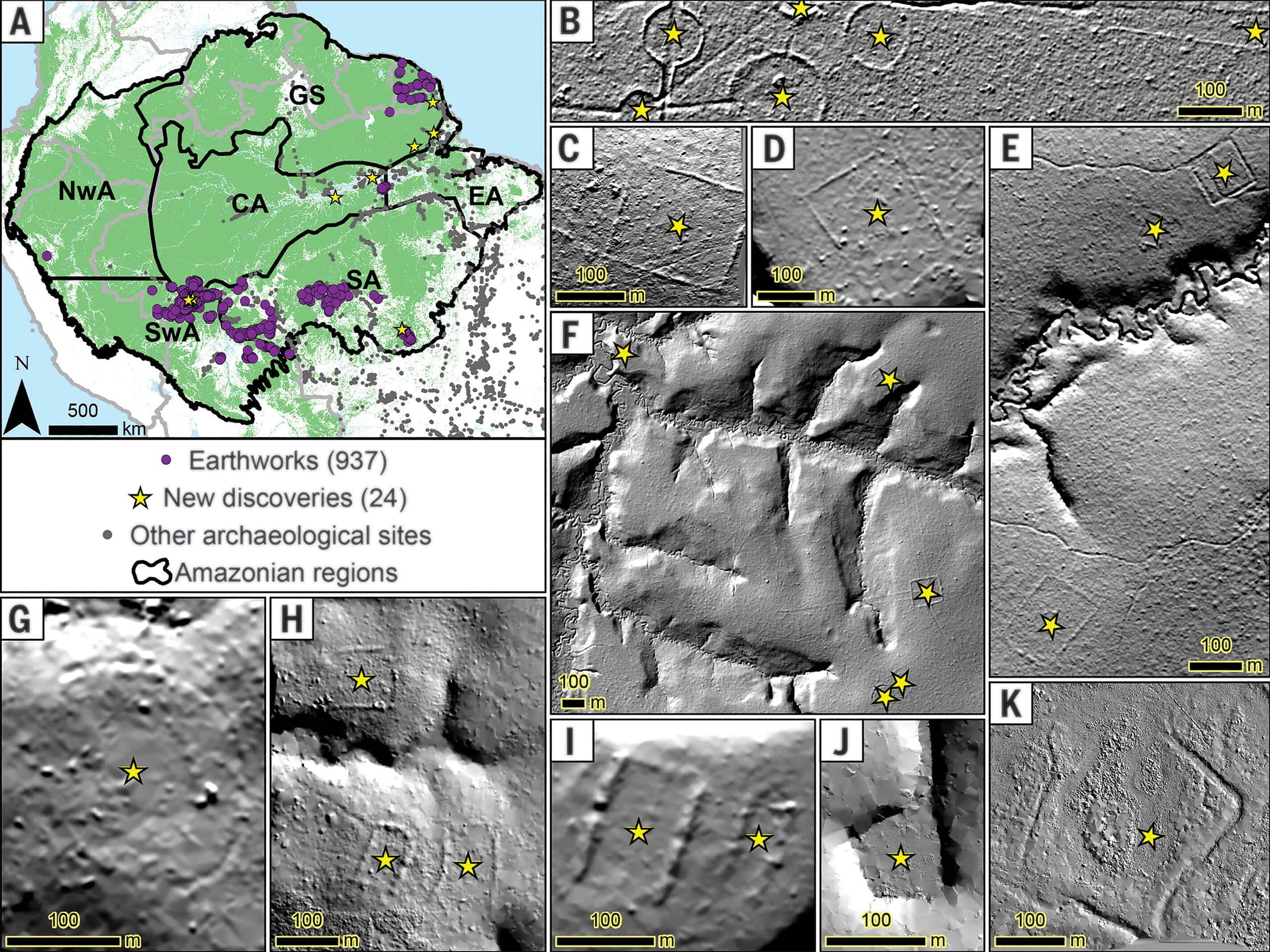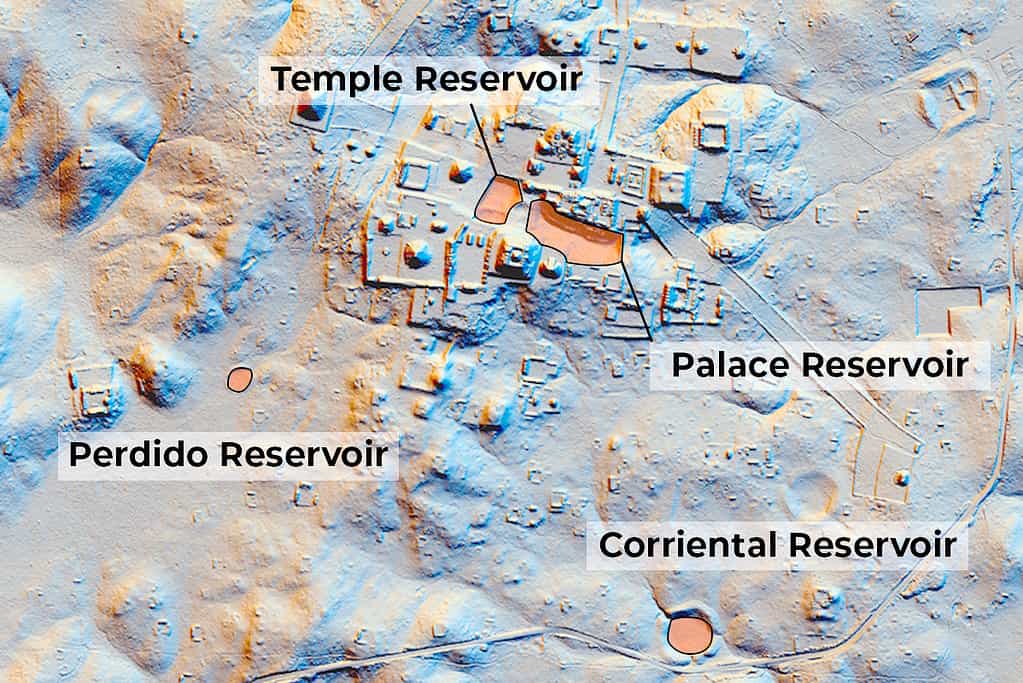The Amazon rainforest is often described as the planet’s “lungs,” a pristine wilderness untouched by human hands. But peel back the green canopy with lasers, and a different story emerges: the forest is not just a natural wonder—it’s also an ancient archive of civilizations.

A massive new study suggests the Amazon may be littered with between 10,000 and 24,000 ancient earthworks, built long before Europeans set foot in South America. These sprawling geometric structures, including villages, ceremonial sites, defensive ditches, stretch across thousands of miles, hinting at civilizations far more sophisticated than once believed.
The study was carried out by a team of 230 researchers from 156 institutions across 24 countries. They made their discovery after identifying 24 new archaeological sites through advanced remote mapping technologies, using a laser mounted on an aircraft, known as LIDAR. This sensor can rebuild surface elements into a detailed 3D model.
“Our study suggests that the Amazon rainforest may not be as pristine as many believe, as when we seek a better understanding of the extent of pre-Columbian human occupation throughout it, we are surprised by a significant number of sites still unknown to the science community,” Vinicius Peripato, study author, said in a news release.
Lasers and archaeology
While earthworks can be spotted by satellites with high spatial resolution, this works mainly on deforested areas. This is where LIDAR enters the picture.
LiDAR systems send laser pulses from an airborne platform (like a helicopter or drone) toward the ground. By measuring the time it takes for the laser light to bounce back, the system can create a highly accurate topographic map of the area below. These maps can reveal the contours of the ground, including any buried structures or features that might be invisible from the surface.

Deforestation has removed almost 20% of natural vegetation in the Amazon, which suggests LIDAR could reveal many more discoveries in the remaining 80% of the basin that’s opaque to satellites.
The researchers scanned over 5,000 squared kilometers of LIDAR data and found 24 unreported earthworks in southern, southwestern, central and northern Amazonia. They detected a fortified village, defensive and ceremonial sites, crowned mountains, megalithic structures and riverine sites on floodplains, among many others.
“From the 3D models of the surface, it is possible to digitally remove all vegetation and initiate a precise and detailed investigation of the terrain beneath the forest,” Peripato said. “Given the wealth of information contained in these data, we embarked on an archaeological investigation. We investigated a total of 0.08% of the Amazon.”
Earthworks in the Amazon
Resaerchers then wanted to estimate how more other structures could be hidden in the Amazon.
By extrapolating the density of earthworks observed in the LIDAR data to the extent of Amazonia (6.7 million squared kilometers), the researchers predict that between 10,000 and 24,000 ancient earthworks are waiting to be discovered. Their model suggests that earthworks are likely concentrated in southwestern Amazonia.
The discovery of earthworks beneath forest canopy indicates that, given enough time after these sites get depopulated, forests regenerated over the centuries, the researchers said. The earthworks are also proof of an ancestor’s occupation, way of life and their relation with the forest. Today, indigenous peoples struggle in the Amazon.
The highest density of the so far found earthworks is outside protected areas of the Amazon region and mostly located in the region with the highest deforestation rates. The researchers called for better protection of the Amazon not only for its environmental value but also for its archaeological, social and biocultural value.
More and more findings
This study came out in 2023. Ever since, more and more research seems to back it up, uncovering sprawling cities and settlements.
In the Upano Valley, archaeologists uncovered an entire urban system dating back to 500 BC. More than 6,000 platforms, plazas, and roads revealed a form of “garden urbanism,” where cities were embedded in a managed forest landscape. At its peak, the region may have supported tens of thousands of people.
In the Llanos de Moxos, researchers investigated mysterious mounds known as “forest islands.” Far from natural, these turned out to be ancient settlements dating back more than 10,000 years, with reservoirs and causeways designed to cope with floods
Another team found that certain tree species, including palms, cluster around archaeological sites. That means the forest itself still carries the fingerprints of ancient human activity, centuries after those societies vanished, and we can develop better and better ways to find these settlements.
The big question now is what we’ll do with this knowledge. Every new discovery underscores that the same areas richest in archaeological potential are also those being cleared fastest for cattle, soy, and logging. Once bulldozed, these earthworks are gone forever. We have plenty of incentive to protect the Amazon anyway, will archaeology make a difference?
The lasers have shown us what’s possible. Now it’s up to us to decide whether these hidden cities and sacred sites will be studied and celebrated—or lost before we even know they exist.
This article was originally published in 16 October 2023 and has since been edited to include subsequent information.
The study was published in the journal Science.






